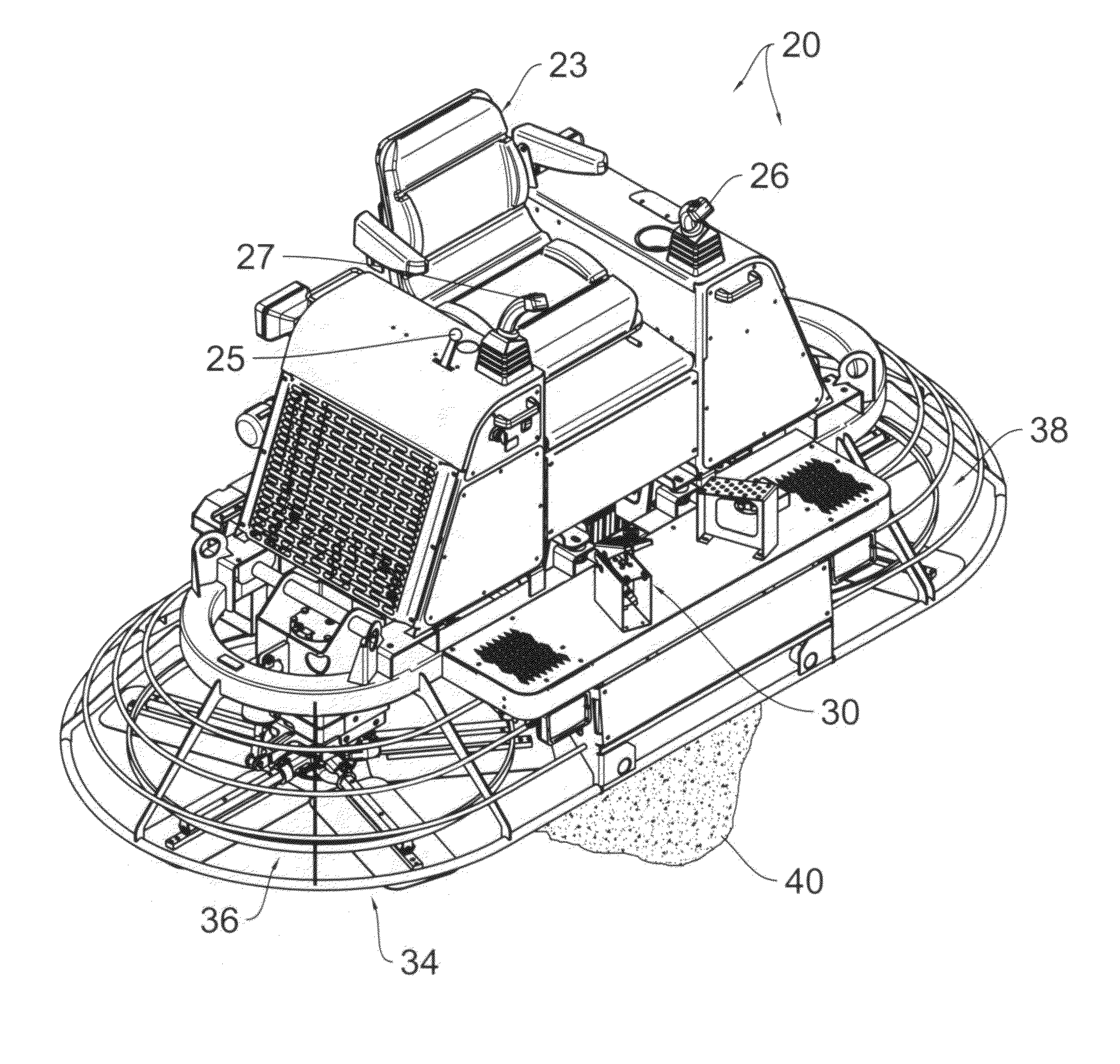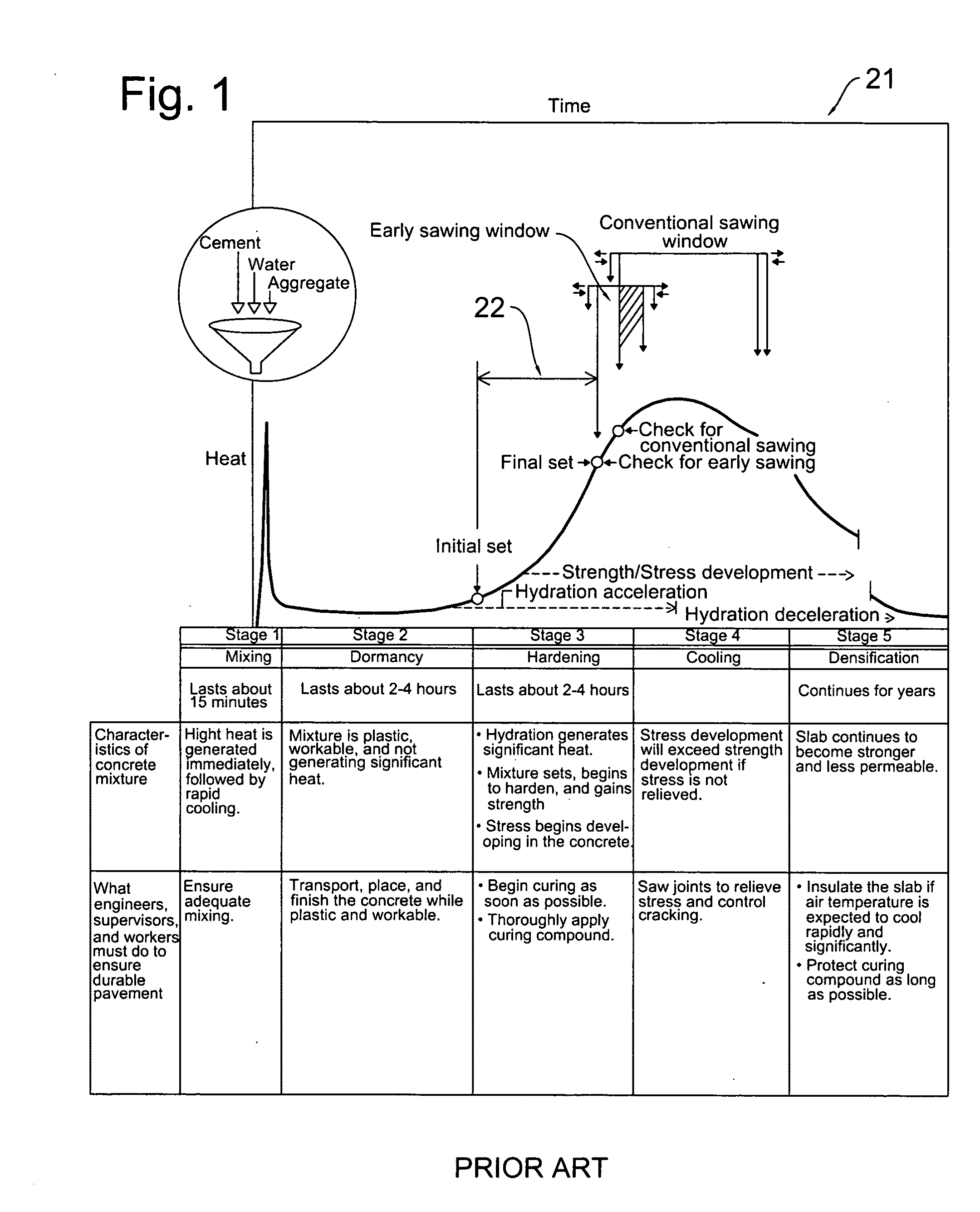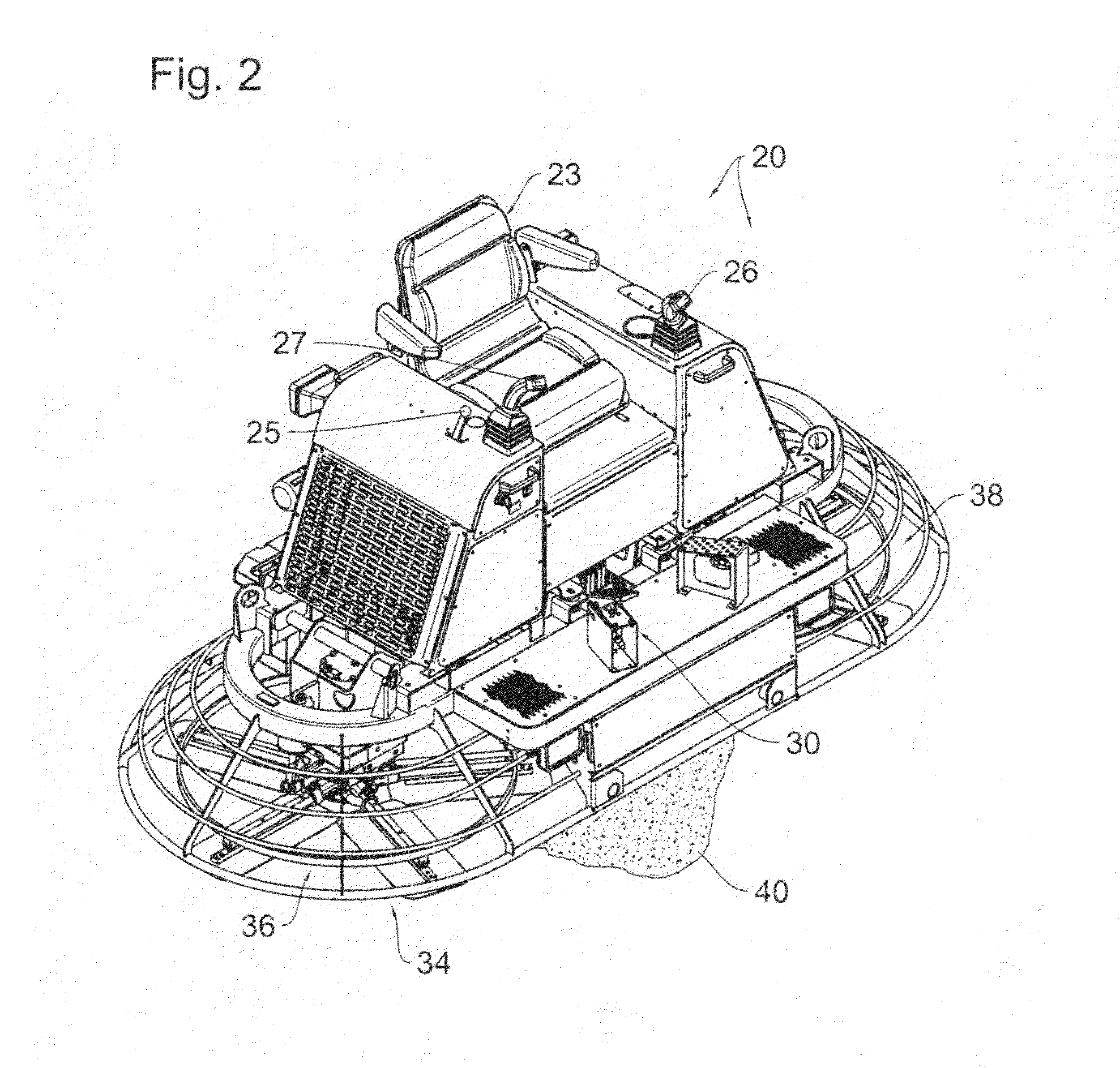Hydraulic riding trowels with automatic load sensing
a technology of automatic load sensing and riding trowels, which is applied in the direction of roads, construction, buildings, etc., can solve the problems of difficult steering and control of devices, new problems in the art, and the drive train of trowels, and achieve the effect of facilitating automatic control
- Summary
- Abstract
- Description
- Claims
- Application Information
AI Technical Summary
Benefits of technology
Problems solved by technology
Method used
Image
Examples
Embodiment Construction
[0081]With primary attention directed now to FIG. 1, the concrete curing graph 21 plots heat against time through the five stages of hydration of freshly placed concrete. Time segment 22 indicates a time period in which troweling is preferably conducted, known as the “window of finishability.” As discussed earlier, troweling ideally begins with panning as known in the art when the concrete is plastic, towards the left portion of segment 22. Troweling graduates to blading as concrete hardens during the hardening stage, towards the right of segment 22. However, as concrete hardens, there is no clear demarcation point mandating the transition from pan troweling to blade troweling. Similarly, on a job site, the exact condition of curing concrete contacted by a given trowel during its travel is far from uniform. Therefore a panning trowel will sometimes encounter concrete that should be trowelled with a blade, and blading trowels often contact more plastic regions of concrete that ideall...
PUM
 Login to View More
Login to View More Abstract
Description
Claims
Application Information
 Login to View More
Login to View More - R&D
- Intellectual Property
- Life Sciences
- Materials
- Tech Scout
- Unparalleled Data Quality
- Higher Quality Content
- 60% Fewer Hallucinations
Browse by: Latest US Patents, China's latest patents, Technical Efficacy Thesaurus, Application Domain, Technology Topic, Popular Technical Reports.
© 2025 PatSnap. All rights reserved.Legal|Privacy policy|Modern Slavery Act Transparency Statement|Sitemap|About US| Contact US: help@patsnap.com



